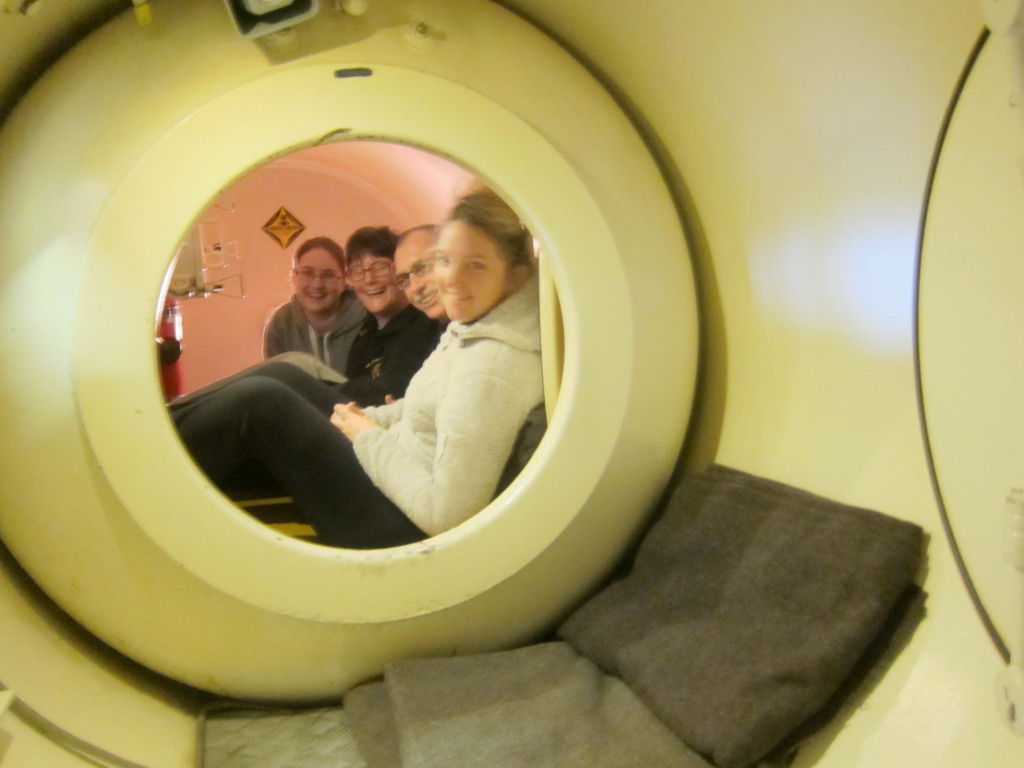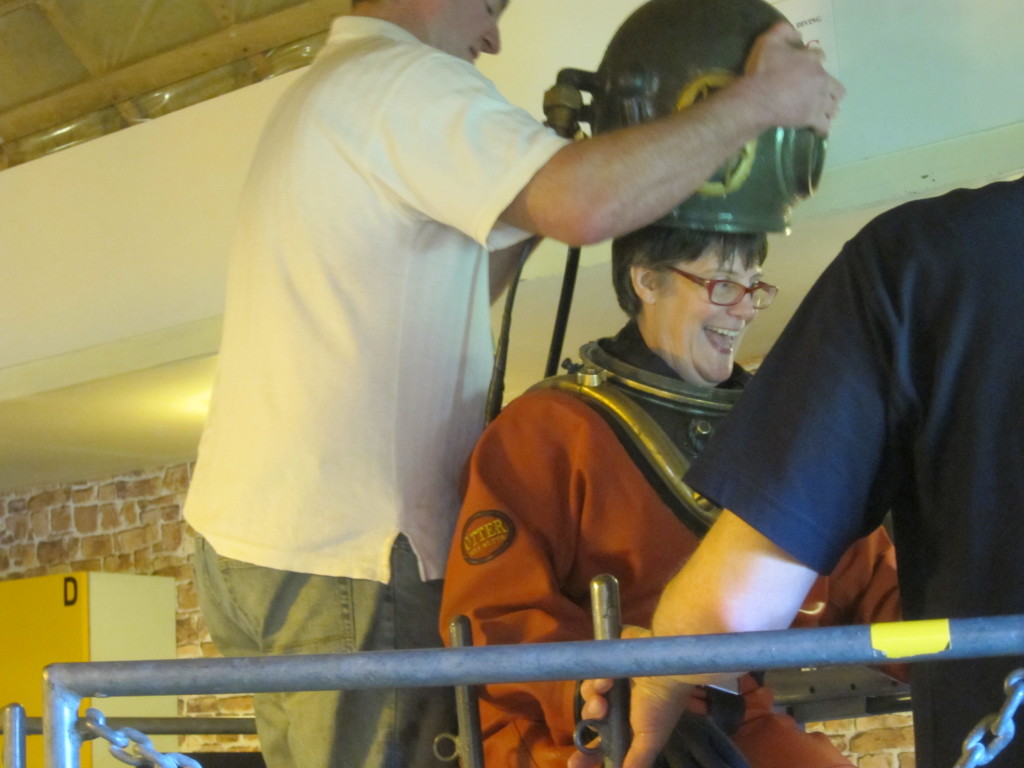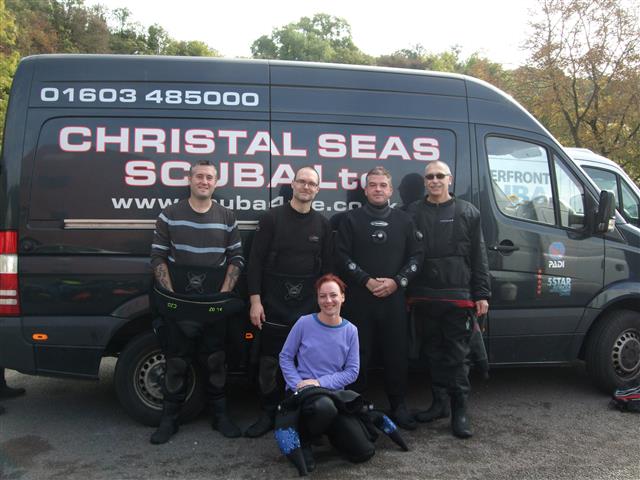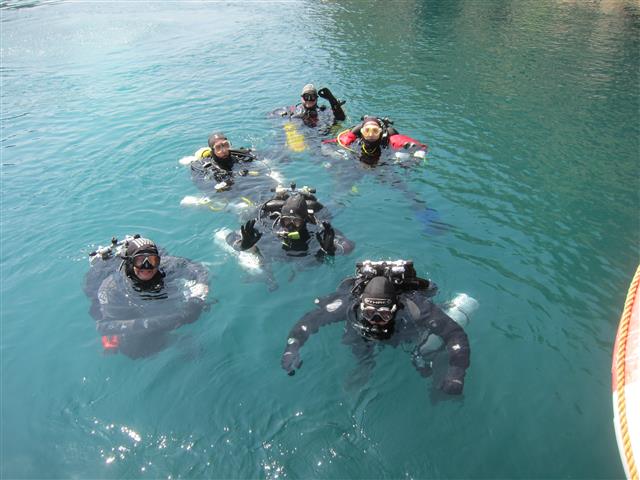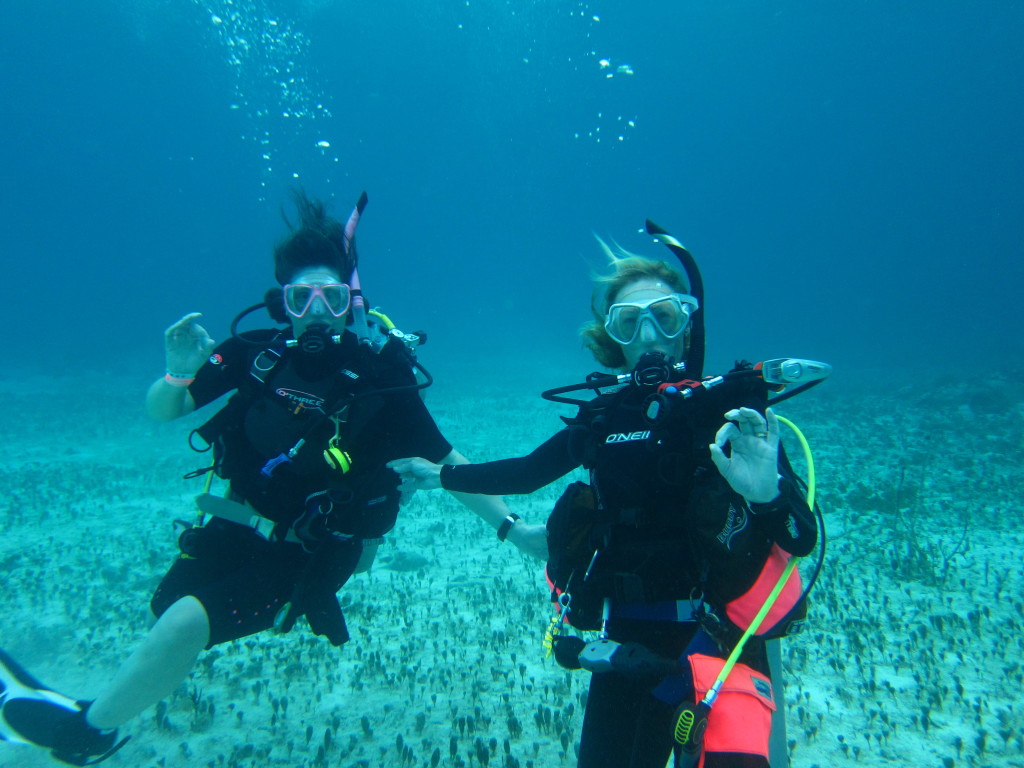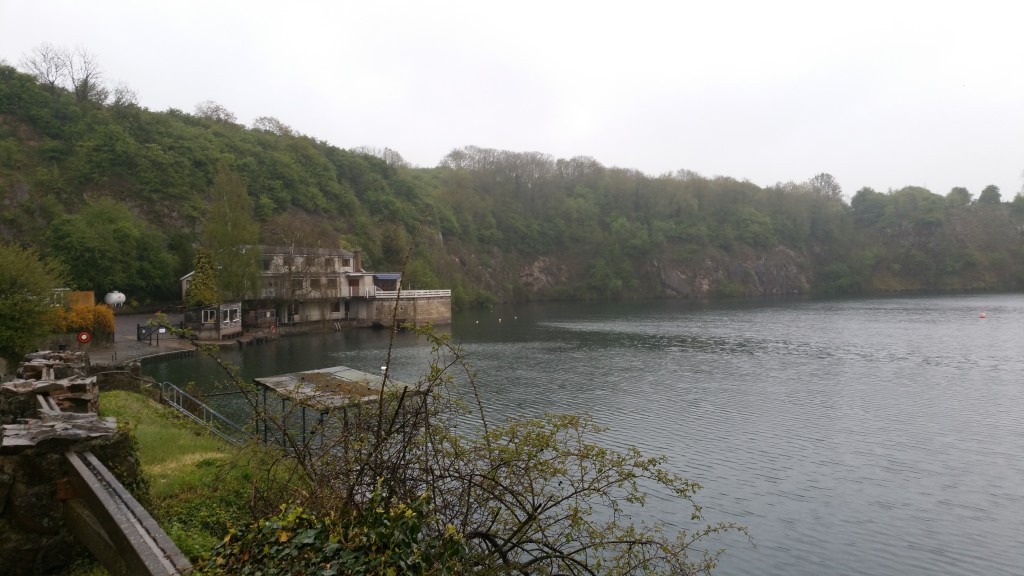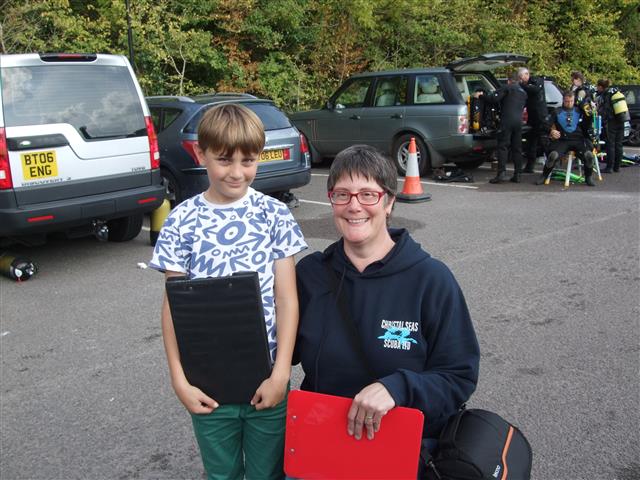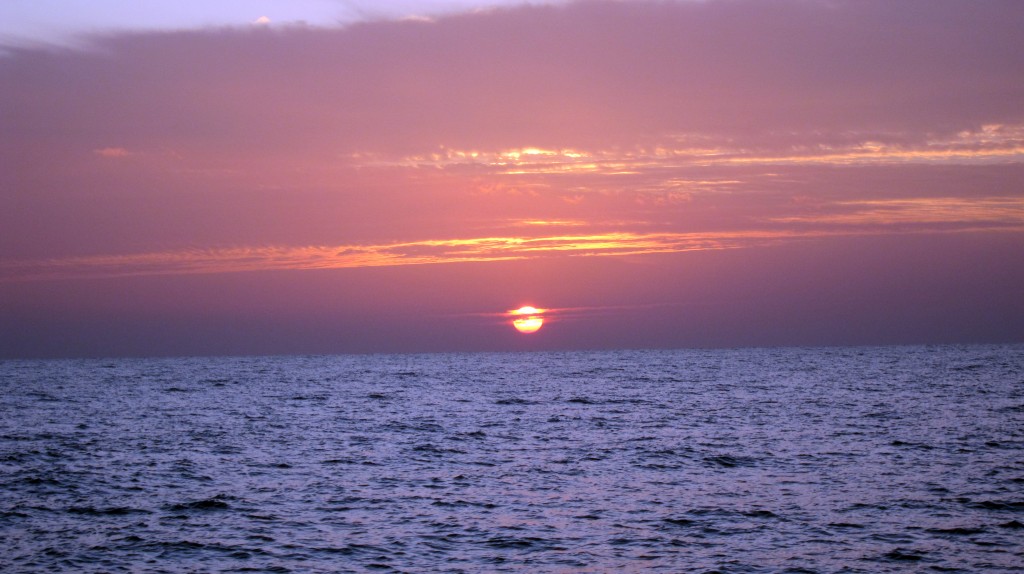News
How about a Dive Club holiday?
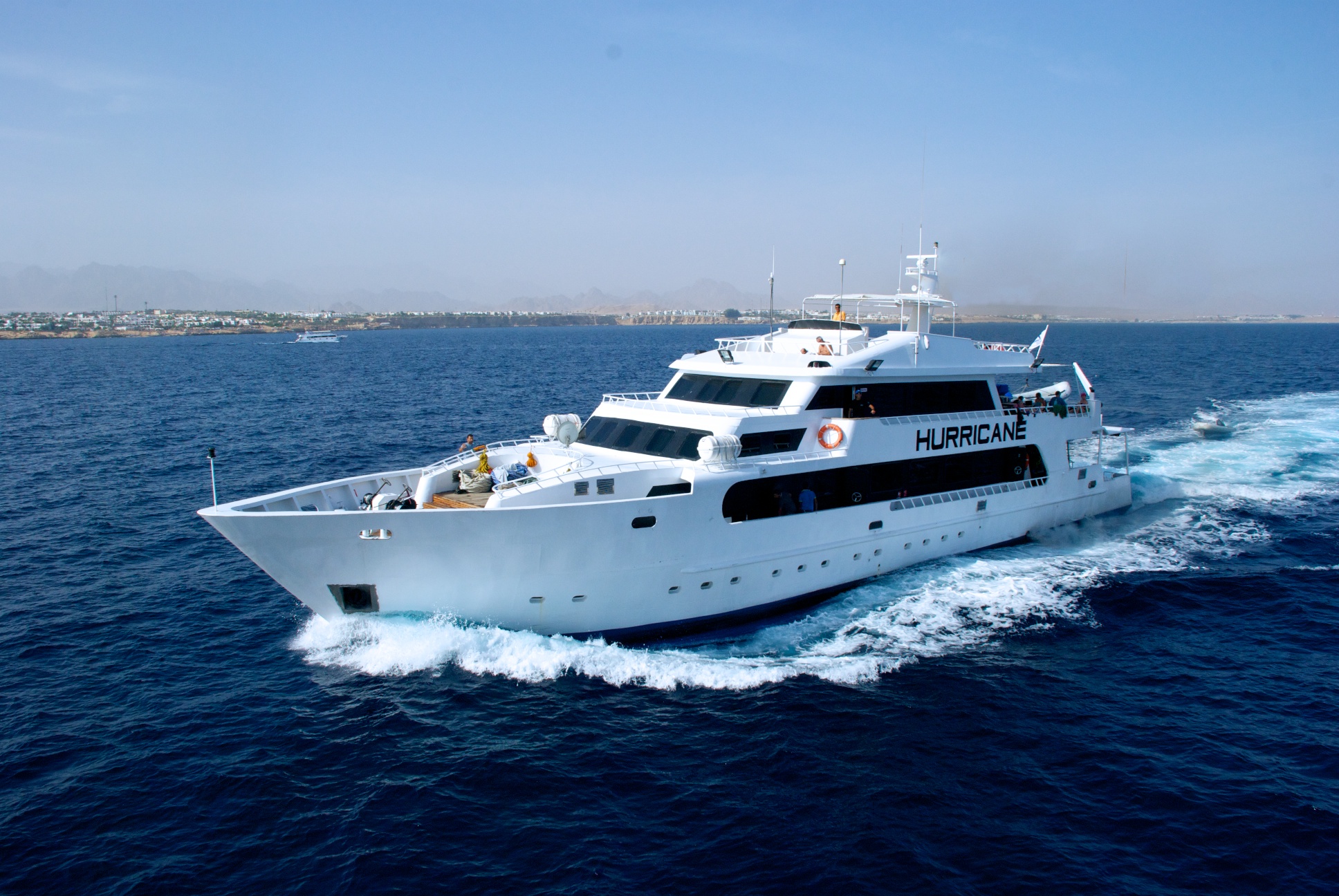
For those that haven’t considered it yet, there are many good reasons for joining a local dive club. Enjoying the company of friends who share the same interests, availability of buddies for local diving, kit tips, access to training, information about local dive sites and conditions, getting the benefit of someone else’s knowledge and experience, first-hand information on potential holiday destinations – the list goes on and on. It can really be considered to be more like a community than just a club, with friendships extending outside the common interest in diving as people discover they have other things in common. Many clubs have regular social evenings; ours also has guest speakers on a range of subjects of interest to divers, such as photography or environmental issues. Kit nights are popular too, with presentations by manufacturer reps and the opportunity to try out those shiny new toys.
There have been some decompression chamber visits as well – these are always popular. One at the Diver Training College near York has an added twist and is always oversubscribed. It is combined with a ‘hard-hat’ dive, giving a chance to experience what it was like in the early days of diving. What a strange experience that was. Massively heavy metal boots, a big bulky helmet with a very restricted view and a heavy chunk of lead hung around the neck. Makes you appreciate modern scuba gear that much more.
[youtube id=”ZWSM-hSrEGI” width=”100%” height=”400px”]
One thriving area at my local club, Christal Seas Scuba in Norwich, is group dive weekends and holidays. This is another benefit of a dive club, as the planning for these can be either shared or centrally organised. Lift sharing can be arranged too, cutting down on costs. Chris and Polly run a very active club, and almost every weekend there is something going on from Open Water training to Tec trips and everything in between. Christal Seas Scuba is a 5* PADI IDC doing a huge number of certifications every year, which keeps the Instructors (and us DMs) run ragged at times.
If you read my last travel article (Leap into Saint Lucia) you will be aware that for quite a few years my wife Sandy was a non-diver. This didn’t stop her from joining us on a club trip to El Gouna in the Red Sea, or enjoying a trip to Mexico, split between Playa Del Carmen and Cozumel, during which in between spa sessions she tried her first Open Water dive (and really enjoyed it). It was the social aspect that attracted her, and when she started her Open Water training it was surprising how much information she had picked up just by being around divers during the inevitable discussions over gear, the benefits of this or that piece of equipment and of course the post-dive ‘did you see’ and ‘what happened was’ conversations in the bar.
Fast forward a couple of years and Sandy is now an Advanced Open Water diver with a couple of good diving holidays in Malta, Egypt and Saint Lucia behind her and is just considering whether to do her Rescue Diver course on the way to Master Scuba Diver (not at all bad for someone who wouldn’t go out of her depth 2 years ago, but don’t tell her I said so). She has even joined us at Stoney Cove for a few weekends. For those who don’t know it, Stoney Cove is an inland dive centre that used to be a quarry. As such it has different depth shelves, which makes it an ideal training site so the club travels there – a lot. We take most of the rooms in a local hotel and make a social weekend of it because it’s too far for daily travel and you really need to be on site early to get the best parking. There are underwater attractions such as wrecks, aircraft and vehicles to make it more interesting too.
Sandy wasn’t diving, I hasten to add. There’s still no prospect that any water cold enough to require a drysuit will be suitable for serious consideration, but someone doing surface cover for the club is always welcome. No, that’s not accurate enough. The surface cover job is not just welcome, it is essential, indeed many dive sites require dive groups to have someone doing this job, and it frequently falls to non-diving partners or other family members who tolerate the strange addiction we have for pulling on rubber suits and jumping in water. They need to be familiar with the dive plan and the emergency action plan. Logging divers in and out, running to the van when someone has forgotten something or had a kit malfunction, helping divers don fins & masks and those wet gloves that just WON’T pull over your hands, keeping the first aid kit and oxygen handy, passing weights to someone who has underestimated just how much more they will need using a drysuit, looking after keys, wallets, purses, phones……even when it’s pouring with rain and blowing a gale. Look around during your next dive trip. Are there people doing that for your group or club? If so, when was the last time you bought them a drink, because they definitely deserve one.
Anyway, back to the holiday theme. We both love our holidays but one type of holiday that I had reluctantly ruled out up to now was a liveaboard. Not because it wasn’t attractive to me, but because when Sandy was a non-diver I thought it would be unfair to trap her on a small boat for a week with a group of enthusiastic divers, having nothing much to do except read, sunbathe and listen to us bore her about things she was only going to see in photos or videos. Well imagine my enthusiasm when after completing her AOW, she looked at the upcoming club holidays and said “well what about going on that Red Sea liveaboard trip in June then?”
So, a (very) short while later we were signed up to a club trip to the Southern Red Sea, St Johns, Elphinstone, Fury Shoal etc. booked through the ever popular Scuba Travel.
A first for both of us – our first liveaboard holiday, but hopefully not our last. An area of the Red Sea neither of us have dived in. Strangely, the club members on the trip are mostly recently qualified or less experienced divers. In fact Sandy is going to be one of the more experienced divers among us (in terms of dive numbers), which she still can’t quite believe. It should be an interesting trip with plenty to write about.
Blogs
Northern Red Sea Reefs and Wrecks Trip Report, Part 3: The Mighty Thistlegorm

Jake Davies boards Ghazala Explorer for an unforgettable Red Sea diving experience…
Overnight, the wind picked up, making the planned morning dive a bit bumpy on the Zodiacs to the drop point on Thomas Reef. There, we would dive along the reef before descending through the canyon and then passing under the arch before ascending the wall with a gentle drift. The site provided great encounters with more pelagic species, including shoals of large barracuda, tuna, and bigeye trevally.
Once back on the boat, it was time to get everything tied down again as we would head back south. This time, with the wind behind us, heading to Ras Mohammed to dive Jackfish Alley for another great gentle drift wall dive before then heading up the coast towards the Gulf of Suez to moor up at the wreck of the Thistlegorm. This being the highlight wreck dive of the trip and for many onboard, including myself, it was the first time diving this iconic wreck. I had heard so much about the wreck from friends, and globally, this is a must on any diver’s list. Fortunately for us, there was only one other boat at the site, which was a rarity. A great briefing was delivered by Ahmed, who provided a detailed background about the wreck’s history along with all the required safety information as the currents and visibility at the site can be variable.

Kitting up, there was a lot of excitement on deck before entering the water and heading down the shoreline. Descending to the wreck, there was a light northerly current which reduced the visibility, making it feel more like the conditions that can be found off the Welsh coast. At 10m from the bottom, the outline of the wreck appeared as we reached the area of the wreck which had been bombed, as our mooring line was attached to part of the propeller shaft. Arriving on deck, instantly everywhere you looked there were many of the supplies which the ship was carrying, including Bren Carrier tanks and projectiles that instantly stood out.

We headed around the exterior, taking a look at the large propeller and guns mounted on deck before entering the wreck on the port side to take a look in the holds. It was incredible to see all the trucks, Norton 16H, and BSA motorcycles still perfectly stacked within, providing a real snapshot in time.

Overall, we had four dives on the Thistlegorm, where for all of the dives we were the only group in the water, and at times, there were just three of us on the whole wreck, which made it even more special, especially knowing that most days the wreck has hundreds of divers. Along with the history of the wreck, there was plenty of marine life on the wreck and around, from big green turtles to batfish, along with shoals of mackerel being hunted by trevally. Some unforgettable dives.

The final leg of the trip saw us cross back over the Suez Canal to the Gobal Islands where we planned to stay the night and do three dives at the Dolphin House for the potential of sharing the dive with dolphins. The site, which included a channel that was teeming with reef fish, especially large numbers of goatfish that swam in large shoals along the edge of the reef. These were nice relaxing dives to end the week. Unfortunately, the dolphins didn’t show up, which was okay as like all marine life they are difficult to predict and you can’t guarantee what’s going to be seen. With the last dive complete, we headed back to port for the final night where it was time to clean all the kit and pack before the departure flight the next day.

The whole week from start to finish on Ghazala Explorer was amazing; the boat had all the facilities you need for a comfortable week aboard. The crew were always there to help throughout the day and the chefs providing top quality food which was required after every dive. The itinerary providing some of the best diving with a nice mixture of wreck and reef dives. I would recommend the trip to anyone, whether it’s your first Red Sea liveaboard in the Red Sea or you’re revisiting. Hopefully, it’s not too long before I head back to explore more of the Red Sea onboard Ghazala Explorer.

To find out more about the Northern Red Sea reef and wrecks itineraries aboard Ghazala Explorer, or to book, contact Scuba Travel now:
Email: dive@scubatravel.com
Tel: +44 (0)1483 411590
Photos: Jake Davies / Avalon.Red
Blogs
Northern Red Sea Reefs and Wrecks Trip Report, Part 2: Wall to Wall Wrecks

Jake Davies boards Ghazala Explorer for an unforgettable Red Sea diving experience…
The second day’s diving was a day full of wreck diving at Abu Nuhas, which included the Chrisoula K, Carnatic, and Ghiannis D. The first dive of the day was onto the Chrisoula K, also known as the wreck of tiles. The 98m vessel remains largely intact where she was loaded with tiles which can be seen throughout the hold. The stern sits at 26m and the bow just below the surface. One of the highlights of the wreck is heading inside and seeing the workroom where the machinery used for cutting the tiles are perfectly intact. The bow provided some relaxing scenery as the bright sunlight highlighted the colours of the soft coral reef and the many reef fish.

Following breakfast, we then headed to the next wreck, which was the Carnatic. The Carnatic is an 89.9m sail steamer vessel that was built in Britain back in 1862. She ran aground on the reef back in 1869 and remains at 27m. At the time, she was carrying a range of items, including 40,000 sterling in gold. An impressive wreck where much of the superstructure remains, and the two large masts lay on the seafloor. The wooden ribs of the hull provide structures for lots of soft corals, and into the stern section, the light beams through, bouncing off the large shoals of glass fish that can be found using the structure as shelter from the larger predators that are found outside of the wreck.

The final wreck at Abu Nuhas was the Ghiannis D, originally called ‘Shoyo Maru,’ which was 99.5m long and built in Japan back in 1969 before becoming a Greek-registered cargo ship in 1980. The ship then ran aground on the reef on April 19th, 1983, and now sits at the bottom at a depth of 27m. Heading down the line, the stern of the ship remains in good condition compared to the rest of the hull. The highlight of the wreck, though, is heading into the stern section and down the flights of stairs to enter the engine room, which remains in good condition and is definitely worth exploring. After exploring the interior section of the ship, we then headed over to see the rest of the superstructure, where it’s particularly interesting to see the large table corals that have grown at the bow relatively quickly considering the date the ship sank. After surfacing and enjoying some afternoon snacks, we made sure everything was strapped down and secured as we would be heading north and crossing the Gulf of Suez, where the winds were still creating plenty of chop.

The next morning, it was a short hop to Ras Mohammed Nature Reserve for the next couple of days of diving. The 6am wake-up call came along with the briefing for the first site we would be diving, which was Shark & Yolanda. The low current conditions allowed us to start the dive at Anemone City, where we would drift along the steep, coral-filled wall. These dives involved drifts, as mooring in Ras Mohammed wasn’t allowed to protect the reefs. As a dive site, Shark & Yolanda is well-known and historically had a lot of sharks, but unfortunately not so many in recent years, especially not so early in the season. However, there was always a chance when looking out into the blue.

The gentle drift took us along the steep walls of the site, with plenty of anemone fish to be seen and a huge variety of corals. It wasn’t long into the dive before we were accompanied by a hawksbill turtle, who drifted with us between the two atolls before parting ways. Between the two reefs, the shallow patch with parts of coral heads surrounded by sand provided the chance to see a few blue-spotted stingrays that were mainly resting underneath the corals and are always a pleasure to see. With this being the morning dive, the early sunlight lit up the walls, providing tranquil moments. Looking out into the blue, there was very little to be seen, but a small shoal of batfish shimmering underneath the sunlight was a moment to capture as we watched them swim by as they watched us.

Towards the end of the dive, we stopped at the wreck of the Jolanda where the seafloor was scattered with toilets from the containers it was carrying. This provided a unique site to make a safety stop, which was also accompanied by a large barracuda slowly swimming by, along with a hawksbill turtle calmly swimming over the reef as the sun rays danced in the distance.
For the next dive, we headed north to the Strait of Tiran to explore the reefs situated between Tiran Island and Sharm El Sheik, which were named after the British divers who had found them. We started on Jackson before heading to Gordons Reef, where we also did the night dive. All the atolls at these sites provided stunning, bustling coral reefs close to the surface and steep walls to swim along, which always provided the opportunity to keep an eye out for some of the larger species that can be seen in the blue. Midwater around Jackson Reef was filled with red-toothed triggerfish and shoals of banner fish, which at times were so dense that you couldn’t see into the blue. Moments went by peacefully as we enjoyed the slow drift above the reef, watching these shoals swim around under the mid-afternoon sun.

The night dive at Gordon’s Reef was mainly among the stacks of corals surrounded by sand, which was great to explore under the darkness. After some time circling the corals, we came across what we were really hoping to find, and that was an octopus hunting on the reef. We spent the majority of the dive just watching it crawl among the reef, blending into its changing surroundings through changes in colour and skin texture. It’s always so fascinating and captivating to watch these incredibly intelligent animals, in awe of their ability to carry out these physical changes to perfectly blend into the reef. Before we knew it, it was time to head back to the boat to enjoy a well-deserved tasty dinner prepared by the talented chefs onboard.
Check in for the 3rd and final part of this series from Jake tomorrow!
To find out more about the Northern Red Sea reef and wrecks itineraries aboard Ghazala Explorer, or to book, contact Scuba Travel now:
Email: dive@scubatravel.com
Tel: +44 (0)1483 411590
Photos: Jake Davies / Avalon.Red
-

 News3 months ago
News3 months agoHone your underwater photography skills with Alphamarine Photography at Red Sea Diving Safari in March
-

 News3 months ago
News3 months agoCapturing Critters in Lembeh Underwater Photography Workshop 2024: Event Roundup
-

 Marine Life & Conservation Blogs2 months ago
Marine Life & Conservation Blogs2 months agoCreature Feature: Swell Sharks
-

 Blogs2 months ago
Blogs2 months agoMurex Resorts: Passport to Paradise!
-

 Blogs2 months ago
Blogs2 months agoDiver Discovering Whale Skeletons Beneath Ice Judged World’s Best Underwater Photograph
-

 Gear Reviews3 months ago
Gear Reviews3 months agoGear Review: Oceanic+ Dive Housing for iPhone
-

 Marine Life & Conservation2 months ago
Marine Life & Conservation2 months agoSave the Manatee Club launches brand new webcams at Silver Springs State Park, Florida
-

 News3 months ago
News3 months agoWorld’s Best Underwater Photographers Unveil Breathtaking Images at World Shootout 2023


